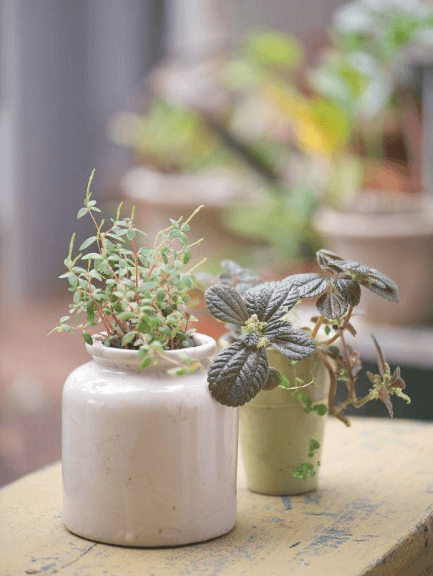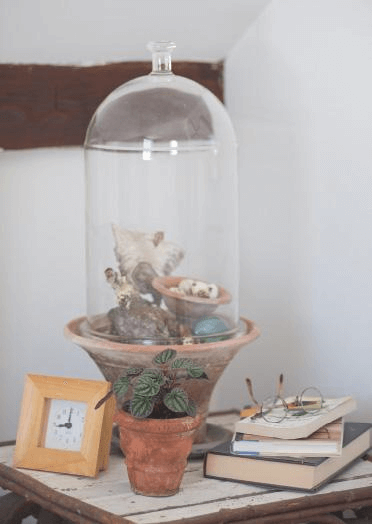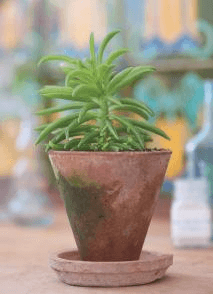[Ebook Việt hóa] The Unexpected Houseplant: 220 Extraordinary Choices for Every Spot in Your Home, Chi Peperomia
[Ebook Việt Hoá] The Unexpected Houseplant: Peperomias (chi Peperomia)
- Nguồn: [Ebook] The Unexpected Houseplant: 220 Extraordinary Choices for Every Spot in Your Home –
- Biên tập: Dũng Cá Xinh (Tháng 02/2022)
- Dịch: Vui Nguyễn
English
PEPEROMIAS
WITH ALL THIS talk of orchids, pelargoniums, and South African bulbs, perhaps you’ve jumped to the conclusion that my home is filled with flashy plants. Not so. Some plants are part of my collection simply because they are indomitable. How can you fail to love a survivor? And peperomias definitely fall into that category. Saturation coverage is my goal, and my mantra is that every nook needs nature, so peperomias fill a niche that few other plants could endure.

Peperomias are not wildly thrilling, but they do have a certain flair. With limited space and unlimited plant lust, there is no way I’m going to bother with “foliage plants,” such as Spider Pants (chlorophytums), Peace Lilies (spathiphyllums), and similar ilk. But occasionally, you need a plant with a stiff upper lip. That’s where peperomias prove invaluable.
To give you a mental image of peperomias and their breadth, the foliage in this genus is impressively diverse. However, the flowers are never going to send shock waves. In fact, I have heard them likened to rattails with a thin, seemingly naked spike that runs through the clan. There are exceptions. Peperomia fraseri is topped by small, white, feathery plumes, almost like someone drastically downsized the astilbe. But by and large, the foliage is the draw.
On the foliage front, peperomias have plenty going on. Take Peperomia incana, for example. With thick stems, thick leaves the size of your average oatmeal cookie, and silver felt covering all surfaces, it rates as semi-riveting. And, despite its succulent look, the plant can tolerate shady conditions. More mainstream is the watermelon pepper (also known as the watermelon begonia, but that’s confusing—it is not a begonia or a watermelon), Peperomia argyreia. The name refers to the silver striping that follows the contours of the leaf. The foliage emerges around a central stem, and it is a total no-brainer to cultivate. Also ultra-easy and readily available (stop by your local supermarket) is Peperomia caperata and its many cultivars, including ‘Emerald Ripple’, ‘Tricolor’, and a never-ending batch of spins. Its leaves are smaller than the watermelon pepper, and they’re thinner and rippled, with a less waxy substance. Search a little deeper into specialty nurseries, and you can find several peperomias with swollen, succulent leaves lining their stems, such as Peperomia asperula, Peperomia ferreyrae, and Peperomia dolabriformis. Some are upright, others trail, and some, such as Peperomia rotundifolia var. pilosior (with tiny, pill-like leaves on limp, threadish stems), are groundcovers. This is just the tip of the iceberg for peperomias. With more than a thousand species, many are in cultivation.


Do not expect your peperomia to break speed records. Do not even expect your peperomia to do more than move just one step ahead of suspended animation. But the flip side is that peperomias do not require much upkeep. Of course, they would love to be watered when dry, but they do not complain if you forget. They even take repeated offenses in stride. They tolerate heavy shade, but sun is dandy too (as long as you make the transition gradually).
- ALSO CALLED: radiator plants
| FLOWERS | Most have something in the rattail line; some are a little more feathered |
| FOLIAGE | With markings, ripple effects, and intriguing colors, the leaves are the main attraction |
| OTHER ATTRIBUTES |
Durable. You don’t get a nickname like “radiator plant” for nothing. |
| SIZE | Some are trailing, others grow from 6 to 20 inches (15–50cm) in height |
| EXPOSURE | East, west, or south |
| WATER REQUIREMENTS |
Tolerates occasional drying out |
| OPTIMUM NIGHTTIME TEMPERATURE |
50–65°F (10–18°C) |
| RATE OF GROWTH | Slow |
| SOIL TYPE | Friable, rich potting soil would be nice, but they’re not finicky |
| FERTILIZING | Early spring to late autumn |
| PROBLEMS | Mealybugs can be an issue |
Tiếng Việt
CÂY TRƯỜNG SINH (PEPEROMIA)
Qua các bài viết về hoa Lan, Thiên trúc quỳ và củ giống Nam Phi, có lẽ bạn đã kết luận rằng nhà tôi tràn ngập những loài thực vật hào nhoáng. Nhưng không phải như vậy. Một số loài cây có trong bộ sưu tập của tôi chỉ đơn giản là vì chúng kiên cường. Làm sao có thể không yêu những loại cây như thế chứ? Và cây Trường sinh chắc chắn là một trong số đó. Mục tiêu của tôi là độ bão hòa che phủ và câu thần chú của tôi là mọi ngóc ngách đều cần có cây, do vậy cây Trường sinh đã lấp đầy mọi ngóc ngách mà ít loài cây khác có thể.

Cây Trường sinh không quá khó coi, nhưng chúng có một sự tinh tế nhất định. Với không gian hạn chế và niềm yêu thích cây cỏ không giới hạn, không có lý do gì tôi phải bận tâm đến những “cây có tán lá”, chẳng hạn như cây Lan chi, cây Lan ý và các loài hoa tương tự. Nhưng đôi khi, bạn cần một cây sống kiên cường. Đó là lúc cây Trường sinh chứng tỏ giá trị của mình.
Để cung cấp cho bạn hình ảnh chân thực về cây Trường sinh và chiều rộng của chúng, các tán lá trong chi này đa dạng một cách ấn tượng. Tuy nhiên, những bông hoa này sẽ không bao giờ gửi sóng xung kích. Trên thực tế, tôi đã từng nghe chúng được ví như những con rắn đuôi chuông với một cái gai mỏng, dường như trần trụi. Tất nhiên vẫn có những ngoại lệ. Peperomia fraseri được bao phủ bởi những chùm lông nhỏ, màu trắng, gần giống như một ai đó đã thu nhỏ cái vòi hoa một cách đáng kể. Nhưng nhìn chung, tán lá là điểm thu hút nhất của loại cây này.
Ở mặt trước của lá, có rất nhiều thứ đang diễn ra. Lấy ví dụ như Peperomia incana. Với thân dày, lá dày có kích thước bằng chiếc bánh quy yến mạch và lớp nỉ bạc bao phủ tất cả các bề mặt. Mặc dù nó có vẻ ngoài mọng nước, loại cây này có thể thích nghi được với điều kiện râm mát. Watermelon pepper (còn được gọi là Watermelon Begonia, nhưng thật khó hiểu – nó lại không phải là Thu hải đường hay Dưa hấu) được trồng khá phổ biến. Tên gọi này xuất phát từ các sọc bạc chạy dọc theo các đường viền của lá. Lá mọc lên tập chung ở giữa thân cây, và việc chăm bón thì hoàn toàn đơn giản. Peperomia caperata và nhiều cây thuộc chi này như ‘Emerald Ripple’, ‘Tricolor’ và một loạt cây khác cực kỳ dễ trồng và dễ kiếm (ghé qua siêu thị ở địa phương). Lá của nó nhỏ hơn, mỏng hơn, có gợn sóng, ít cứng hơn Watermelon pepper. Tìm kiếm sâu hơn một chút trong các vườn ươm, bạn có thể tìm thấy một số cây Trường sinh với những chiếc lá căng mọng nằm dọc theo thân cây, chẳng hạn như Peperomia asperula, Peperomia ferreyrae và Peperomia dolabriformis. Một số cây có thân thẳng đứng, một số khác có thân leo, và một số khác bò trên mặt đất chẳng hạn như Peperomia rotundifolia var. pilosior (với những chiếc lá nhỏ, giống hình viên thuốc trên thân cây mềm và nhỏ như sợi chỉ). Đây chỉ là một phần nhỏ trong số hàng nghìn loại cây Trường sinh đang được nuôi trồng.


Đừng mong rằng cây Trường sinh sẽ phát triển nhanh. Tuy nhiên, cây Trường sinh không yêu cầu nhiều công chăm sóc. Tất nhiên, chúng rất thích được tưới nước khi khô, nhưng chúng sẽ không phàn nàn nếu bạn quên tưới nước. Chúng thậm chí còn không kêu ca khi bạn quên tưới nước nhiều lần. Chúng sống được dưới bóng râm, hoặc dưới ánh nắng mặt trời chói chang (miễn là quá trình chuyển đổi diễn ra dần dần).
- CÒN ĐƯỢC GỌI LÀ: cây Tản nhiệt (Radiator plants)
| HOA | hầu hết đều có đỉnh hoa nhọn; một số loại có nhiều lông hơn một chút |
| LÁ | trên lá có các gợn sóng trông rất hấp dẫn, đó là điểm cuốn hút của cây |
| THUỘC TÍNH KHÁC | bền, nếu không tại sao nó lại có nickname là “máy tản nhiệt” |
| KÍCH THƯỚC | một số là cây leo, một số có chiều cao từ 6 – 12 inch (15- 50 cm) |
| ÁNH SÁNG | phía Đông, Tây hoặc Nam |
| YÊU CẦU VỀ NƯỚC | chịu được tưới nước không thường xuyên |
| NHIỆT ĐỘ TỐI ƯU BAN ĐÊM | 50–65 ° F (10–18 ° C) |
| TỐC ĐỘ PHÁT TRIỂN | chậm |
| LOẠI ĐẤT | đất bầu xốp, giàu dinh dưỡng sẽ tốt nhất, nhưng chúng không được quá chắc |
| BÓN PHÂN | đầu xuân đến cuối thu |
| VẤN ĐỀ | rệp sáp có thể là vấn đề |
Do not expect your peperomia to break speed records. Do not e




